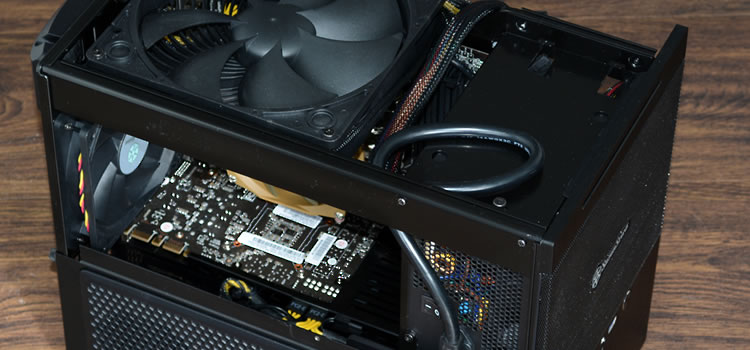Performance & Final Thoughts
There are obviously numerous hardware configurations you can go with when building a SFF gaming PC, however we went with what we feel is the perfect balance of CPU and GPU power, price and performance, as well as aesthetics.
The total build cost came to just under $1400, this includes the Silverstone SG10 case, Intel Core i5-4430 processor, Gainward GTX 760 Phantom graphics card, Corsair 8GB DDR3 memory, Thermalright AXP-100 heatsink, Corsair VS450 power supply, Asrock Z87M Extreme4 motherboard along with the OCZ Vector 240GB SSD and a pair of WD Red 2TB hard drives.
As you can tell, this is more gaming rig/small workstation hardware than your average HTPC.
Needless to say, you'll also need to purchase a monitor, keyboard, mouse and an operating system. Still, for that money you get a pretty incredible gaming system. Without any tweaks or overclocking we scored 14307pts in the latest 3DMark and 4512pts in the Creative PCMark 8 test.
Our brand new small form factor system is very mobile and just as importantly, it's also very quiet and runs pretty cool on the inside. The Thermalright AXP-100 goes a long way in keeping CPU load temperatures down as you can see below...

The drop from 80 degrees with the standard Intel box cooler to just 57 degrees is almost a 30% reduction in load temperature. It's also worth noting that the GeForce GTX 760 hit just 73 degrees when torture testing with FurMark and that is a surprisingly low result.
Closing Thoughts and Considerations
Starting with the Asrock Z87M Extreme4, we found it to be an impressive MicroATX motherboard featuring an aggressive all black design that looked right at home inside the Sugo SG10. Priced at just $135 the Z87M Extreme4 brings an excellent value to boot.
Moving on to the Silverstone Sugo SG10, this incredible little case can be had for $120, which is about as cheap as custom designed MicroATX computer cases come. The Thermaltake Armor A30 costs $110, while the Lian Li Mini Q PC-V354 also costs $120. Providing you the looks, the SG10 is hard to beat, it comes loaded with fans and can support a wide range of high-end hardware. The only possible negative aspect of the SG10 is the highly unique design which often makes installing hardware very different from what you might be used to.
For us the challenge was enjoyable and we suspect most gamers and DIY'ers who build their own systems will enjoy working with the SG10.
The Thermalright AXP-100 worked well in the SG10, though the case is perfectly capable of supporting much larger heatsinks. Still the low profile meant that getting in and around the SG10 was much easier and with a load temperature of just 57 degrees we see no need for a larger tower cooler here. Even though the AXP-100 is an added expense for gamers, knowing that your CPU runs at below 60 degrees when gaming opposed to 80 degrees is probably worth the $60 price tag.
For those wanting to build a compact gaming system we certainly recommend checking out custom designed MicroATX cases opposed to the more traditional tower style cases (which often have a 30L capacity) as they generally fit the same amount of hardware in a smaller space.

